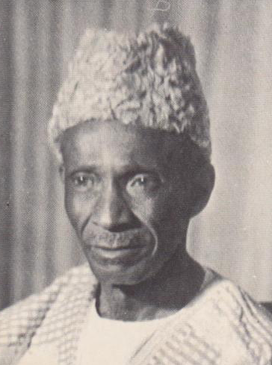
Black Ottawa Scene congratulates the people of Sierra Leone on the occasion of their National Day. Sierra Leone gained its independence from Britain on April 27, 1961.
Sierra Leone officially the Republic of Sierra Leone, informally Salone, is a country on the southwest coast of West Africa. It is bordered by Liberia to the southeast and Guinea surrounds the northern half of the nation. Sierra Leone has a tropical climate with a diverse environment ranging from savanna to rainforests, a total area of 71,740 km2 (27,699 sq mi)[10] and a population of 7,092,113 as of the 2015 census.[11] The capital and largest city is Freetown. The country is divided into five administrative regions which are subdivided into sixteen districts.[12][13] Sierra Leone is a constitutional republic with a unicameral parliament and a directly elected president serving a five-year term with a maximum of two terms. The current president is Julius Maada Bio. Sierra Leone is a secular nation with the constitution providing for the separation of state and religion and freedom of conscience (which includes freedom of thoughts and religion).[14] Muslims make up about three-quarters of the population, though with an influential Christian minority. Religious tolerance in the West African nation is very high and is generally considered a norm and part of Sierra Leone’s cultural identity.[15]
Although inhabited for millennia, Sierra Leone, as the country and its borders are known today, was founded by the British Crown in two phases: first, the coastal Sierra Leone Colony in 1808 (for returning Africans after the abolition of slavery); second, the inland Protectorate in 1896 (as the Crown needed to establish more dominion inland following the outcome of the Berlin Conference of 1884-1885). Hence, the country formally became known as the “Sierra Leone Colony and Protectorate” or simply British Sierra Leone.[16][17] Sierra Leone gained independence from the United Kingdom on 27 April 1961, and became a Commonwealth realm on the same day; the country’s name changed to the Dominion of Sierra Leone. Sir Milton Margai became Sierra Leone’s first prime minister.[18]
During the few decades following independence, Sierra Leone witnessed an increase in political activities, transformations, turmoil, humanitarian and socio-economic crises.[19] The country had its first general elections as an independent nation on 27 May 1961. Margai’s Sierra Leone People’s Party (SLPP) won a plurality of parliamentary seats and he was re-elected Prime Minister.[18] A new constitution was adopted in 1971, paving the way for Sierra Leone becoming a republic, and Siaka Stevens, leader of the All People’s Congress (APC), becoming the first executive president of the Republic of Sierra Leone. Stevens held on to this position for 14 years (until 1985) under a one-party system of government facilitated by the controversial 1978 Constitution. However, Stevens’ hand-picked successor Joseph Saidu Momoh promised to return the country back to a multi-party system; a new constitution was adopted in 1991 that provided the means for a multi-party democracy. A brutal civil war broke out the same year, which went on for 11 years with devastating effects on almost everything that defined Sierra Leone as a nation. In just a year after the war broke out (in 1992), President Momoh was ousted in a coup led by Sierra Leone Army captain Valentine Strasser. Strasser was later “ousted” by his army colleague and second-in-command Julius Maada Bio, for failing to commit to a quick transfer to civilian rule. Bio would then return the country back to a democratic republic in 1996 through a general election.[20]
In early 1996, despite the country going through a brutal civil war, the emergence of the prospect of a transformation back to a multi-party democracy brought fresh hopes and great expectations among a majority of Sierra Leoneans, as the national debate “Peace before Elections vs Elections before Peace” became a hot topic. Eventually, “Elections before Peace” won the debate.[20] Ahmad Tejan Kabbah won the 1996 presidential election and became the first multi-party democratically elected president of Sierra Leone. Since then, there has been a smooth succession to the presidency all via elections. However, a brief coup in 1997 led by Sierra Leone Army major Johnny Paul Koroma ousted Kabbah, who went into exile in Guinea. He was reinstated after nine months through military intervention by ECOMOG. Kabbah’s presidency marked the dawn of a new Sierra Leone, which included the end of the civil war in 2002, a focus on fostering national unity and reconciliation, trust in government, peace and stability, the improvement in relations with many countries, and the refounding of the Sierra Leone Armed Forces with special assistance and training led by the Government of the United Kingdom.[21][22]
About 18 ethnic groups inhabit Sierra Leone; the two largest and most influential ones are the Temne and Mende peoples. About 2% of the country’s population are Creole people, descendants of freed African American and West Indian slaves. English is the official language used in schools and government administration; however, Krio is the most widely spoken language across Sierra Leone, spoken by 97% of the country’s population. Sierra Leone is rich in natural resources, especially diamond, gold, bauxite and aluminium. The country is a member of the United Nations, African Union, Economic Community of West African States (ECOWAS), Mano River Union, Commonwealth of Nations, IMF, World Bank, WTO, African Development Bank, and Organisation of Islamic Cooperation. Sierra Leone is home to Sub-Saharan Africa‘s first Western-style university: Fourah Bay College (established in 1827).
Source: Wikipedia
